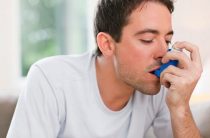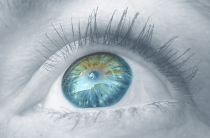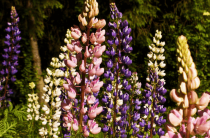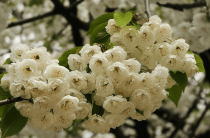Everyone will agree that the sun is life. Without it, plant growth is impossible. The sun is the only natural source of vitamin D for the human body. Also, it can rightfully be considered an indispensable addition to any vacation and recreation. After all, this is what everyone is waiting for with the onset of summer. But few people think about the consequences of such a holiday. Due to reduced immunity, sun allergies often occur . This disease brings a lot of inconvenience and deprivation. A person is not able to fully relax and soak up the warm rays. A distressing factor is also the fact that photodermatitis often manifests itself on the face.
Allergy symptoms
Signs of photodermatitis are quite diverse. Their locations are also unpredictable. But, nevertheless, most often the allergy manifests itself on the skin of the face and eyelids. Symptoms of photodermatosis are as follows:
|
|
|
If you do not respond to these symptoms in time, you can get second and third degree burns. Often prolonged exposure to the sun leads to loss of consciousness or anaphylactic shock. If a person is physically healthy, then allergic manifestations do not threaten him. But if you notice one of these manifestations on your body, then the immune system is not working properly.
Causes
People whose skin belongs to the Celtic type are most susceptible to the disease. One of the reasons may be heredity. It is safe to say that an allergic person suffers from liver dysfunction. This organ is a kind of filter for our body, and its improper operation causes various failures. The following substances can also act as provocateurs:
| Hygiene products |
|
| Cosmetical tools |
|
| sun protection |
|
| Nutritional supplements |
|
| Household chemicals |
|
Often provocateurs of allergies are medications:
- Antibiotics (macrolides, tetracyclines, antimycotic);
- Oral contraceptives and hormonal preparations;
- Non-steroidal anti-inflammatory drugs;
- cardiological preparations;
- Corticosteroids.
After contact with them and exposure to the sun, patients notice a rash on their face in the form of large red spots, severe itching and burning. These plants include: nettle, quinoa, ash, ranunculus, St. John's wort, clover, sedge.
Some foods are considered good causative agents of this type of allergy. Before going out in the sun, the use of these products is prohibited:
|
|
|
Types of photodermatitis
There are the following types of allergic dermatitis, as a result of exposure to the sun:
- phototraumatic reaction. Such a reaction, as a rule, occurs in an absolutely healthy person. It is characterized by reddening of the skin, a slight burning sensation. Often appear on the skin of the face and décolleté. You should simply refuse to stay in the sun in the sun itself.
- phototoxic reaction. This type of reaction occurs in people suffering from hypersensitivity of the skin. It manifests itself after the use of certain medications or the use of cosmetic preparations.
-
photoallergic reaction. It is a pathogenic reaction. Indicates the presence of allergies in the patient. It manifests itself in the form of a rash, blisters, redness, almost immediately after contact with the sun's rays.
Treatment
First you need to stop contact with the sun. Be sure to see a doctor. There are no universal remedies for photodermatosis, only the doctor will be able to choose the type of therapy that is right for you. To diagnose the disease, a blood test and skin tests are prescribed. Most often, antihistamines and ointments are prescribed. Today, antihistamines are divided into three generations. Each subsequent one is an improvement of the previous one.
Antihistamines of the first generation are characterized by their speed, but this action is rather short. Preparations of this group are used to relieve allergy symptoms in the initial stages. The downside is a fairly extensive list of side effects: drowsiness, increased blood pressure, headache, nausea, vomiting, diarrhea, diarrhea, tachycardia, blurred vision.
| Suprastin | Quite an effective remedy. Reduces allergy symptoms. Removes skin manifestations of allergies. The action comes after a couple of hours. During pregnancy, it is allowed to take from the second trimester. It is forbidden to use for people whose activities are associated with a high concentration of attention. |
| Diphenhydramine | Removes allergic manifestations. Eliminates hives and swelling of the skin. Acts as a local anesthetic. It has numerous contraindications and side effects, therefore it is contraindicated in children and pregnant women. |
| Diprazine | It is a stronger drug than Diphenhydramine. It has an anti-allergic effect. It has a stronger sedative effect. It is forbidden to drink alcoholic beverages while taking the drug. |
| clemastine | Removes manifestations of urticaria, dermatitis, Quincke's edema. Often used by patients with bronchial asthma. Contraindicated in children under the age of six and people with individual intolerance to certain components. |
| Diazolin | Eliminates such allergic manifestations as skin itching, urticaria, eczema, dermatitis. May cause gastrointestinal disturbances, dizziness, fatigue, drowsiness. Contraindicated for patients with stomach ulcers. |
| Cyproheptadine | It is prescribed for pollinosis, acute or chronic urticaria, swelling of the skin, skin itching and swelling. Contraindicated in diseases of the gastrointestinal tract, pregnant and lactating women, children. |
The second generation of antihistamines has a less extensive list of adverse reactions and contraindications. Sedation occurs only in rare cases. The action of the drugs persists throughout the day. Rarely addictive. These drugs include:
| Claritin | Pretty decent drug. Does not cause drowsiness and addiction. It is prescribed for allergic dermatitis, hay fever and chronic urticaria. In rare cases, it may cause nausea or vomiting. |
| Kestin | Blocks the release of histamines. Reduces manifestations of an allergy. The action comes within an hour after ingestion and lasts for two days. The drug can cause insomnia, dry mucous membranes. |
| Claricens | Alleviates the condition of the patient with allergies. It copes well with Quincke's edema and urticaria. The tool does not affect the nervous system. Not addictive. Contraindicated in case of individual intolerance to the constituent components of the drug. |
| Lomilan | The drug copes with skin itching. Reduces swelling of the skin. Helps with allergic manifestations on the eyelids. The action begins within half an hour after ingestion. Adverse reactions occur rarely, in the form of headache and nausea. |
The most modern and harmless is the third generation antihistamine. All drugs of this group do not affect the cardiac system, do not cause a sedative effect. Allows you to use for quite a long time, as they are not addictive. Most of these funds are allowed to be taken by pregnant women and nursing mothers without endangering the child. These include:
- Telfast;
- Zyrtec;
- Hismanal;
- Trexil.
Together with antihistamines, it is necessary to use antiallergic ointments and gels in combination. After all, if we can cover any other part of the body with clothes, then you can’t hide your face. It is the ointment that will instantly remove the manifestations of the disease from the face. How to choose the right tool from this group? There are antihistamine creams and ointments with a hormonal and non-hormonal basis, anti-inflammatory, moisturizing and emollients.
The safest are non-hormonal ointments. They are allowed to be taken during pregnancy and children from birth. The disadvantage can be called their cumulative property, so the effect may come after a while. These products are great for sensitive skin. Such ointments relieve itching well and have a healing effect. These include:
| Solcoseryl | The drug consists only of natural ingredients. Accelerates skin regeneration. It has a healing and anti-inflammatory effect. Relieves sunburn. |
| Radevit | Has antipruritic action. The drug is made on the basis of vitamins E, D, and B. Can be used for a long time. Does not cause toxic action. |
| Actovegin | Removes rashes on the face. Prevents scarring after healing. Apply the ointment twice a day. After 2-3 days, the rash will disappear from the face. But you should still continue to use this drug. |
| Desitin | An effective antiallergic agent. Quickly and gently removes the manifestations of the disease, especially on the face. The drug creates a barrier and prevents the urticaria from spreading. |
| Fenistil-gel | The gel has an anesthetic effect. Cools the skin of the face, thereby relieving itching and burning. Reduces inflammation. The action occurs in the first couple of hours after application. |
Hormonal ointments are usually prescribed in advanced cases of allergic manifestations or when other drugs are ineffective. Such ointments are applied once a day and in the prescribed dosage. If it is exceeded, the product will be absorbed through the skin in large quantities, which can significantly aggravate the situation. Hormonal ointment can only be prescribed by a doctor. For the symptoms of an allergy to the sun from the face, this is the best remedy. The result comes immediately after application. You can use such ointments for no longer than five days, since hormones are addictive. Being absorbed into the blood, they affect the functioning of the body systems. These include:
- Hydrocortisone (has a low degree of activity);
- Fluorocort, Cynacort (medium degree of activity);
- Apulein (active drug);
- Dermovate (increased activity).
Anti-inflammatory creams are great for sun allergies on the face. They include paracetamol, ibuprofen, nimesil. These drugs perfectly eliminate itching:
| Triderm | It has antibacterial and anesthetic effect. Reduces the symptoms of photodermatitis. Contraindicated in chicken pox, herpes, skin tuberculosis. Allowed during pregnancy under medical supervision. |
| Advantan | It is prescribed for dermatitis, eczema, sunburn. The result will be noticeable half an hour after applying the ointment. Due to its mild effect, it is allowed for use by pregnant women. |
| Akriderm | Removes any allergic skin diseases. Apply the drug three times a day, gently rubbing into the skin. There are no special contraindications, with the exception of individual intolerance. |
If photodermatitis manifests itself in the form of dryness and peeling of the skin of the face, moisturizers should be used. These preparations are also used in the formation of crusts and cracks. Such ointments and creams should be used as often as possible - up to five times a day. They must be oil based. La Cree cream can be called quite effective. The drug is made on the basis of herbs that relieve inflammation, and panthenol, which promotes skin healing. Due to its light texture, it does not leave a greasy shine on the face. The cream can also be applied to the eyelids. Children are allowed from birth.
Folk recipes
Representatives of traditional medicine recommend a lot of various means. If the skin of the face has become too dry and dehydrated from exposure to sunlight, horseradish can help. You need to grate the horseradish root and squeeze out one tablespoon of juice. This juice is mixed with the same amount of sour cream and rubbed into the skin of the face before going to bed. After a couple of such procedures, allergic symptoms will disappear.
There are cucumbers and potatoes in every refrigerator. These vegetables cool the skin and relieve itching. Cucumber can be grated and applied as a face mask. Or just wipe the affected areas with circles. The same manipulations are carried out with potatoes.
If the manifestations of photodermatosis were noticed in a timely manner, then it will be enough to make a mask of sour cream. You can add one teaspoon of honey to it - it has a softening effect. With the disease, a mint mask does an excellent job. You need to mix a couple of tablespoons of chopped dry mint with a small amount of boiling water and let it brew a little. After this gruel has cooled, apply on face for 20 minutes.
Celery juice is able to quickly remove toxins from the body, and therefore get rid of allergies. Every morning before eating you need to drink three tablespoons of juice. Birch leaves have the same effect. They need to be brewed and drunk instead of regular tea. Watermelon is a delicious antioxidant. In season, it should be eaten as often as possible.
If the patient suffers from hives and severe itching, chamomile lotion should be prepared. It is necessary to pour three tablespoons of dried flowers with a glass of boiling water and insist for half an hour. After cooling, cleanse your face with a cotton pad. A similar remedy can be prepared from aloe juice. Just mix it with purified water.
Celery leaves make an excellent ointment. Mix crushed leaves with butter in proportions 1:1. Before applying the ointment, thoroughly cleanse the skin of the face. Lotions from this plant are effective. For washing, you can prepare a decoction of raspberry leaves.
Prevention
To avoid the manifestation of photodermatosis, try to spend less time in direct sunlight. Before going out in the sun, be sure to apply sunscreen and lotions to your face and body . On the beach, try to sunbathe in the shade. When leaving the water, immediately pat your skin dry with a towel without leaving any drops of water on it. It will not be superfluous to get a wide-brimmed hat. It is worth giving preference to clothes of light colors.
Remember that exposure to the sun after 11 p.m. is prohibited. In the evening, it is better to go out into the sun after 16:00, when ultraviolet activity is much lower. Also prohibited is the use of various deodorants and decorative cosmetics during your stay on the beach.
Help with fainting
- Move the victim to a shady place;
- Elevate the patient's legs to stimulate blood flow to the brain;
- Moisten the face and torso with cool water;
- Bring a cotton swab with ammonia to your nose.
As soon as the patient comes to his senses, let him drink a large amount of purified water without gas.















